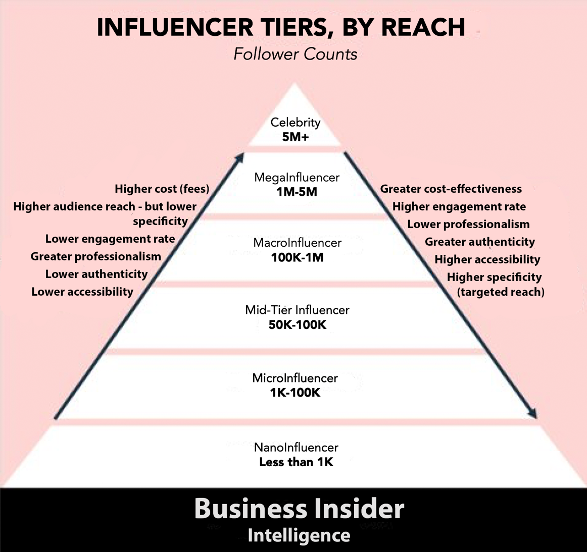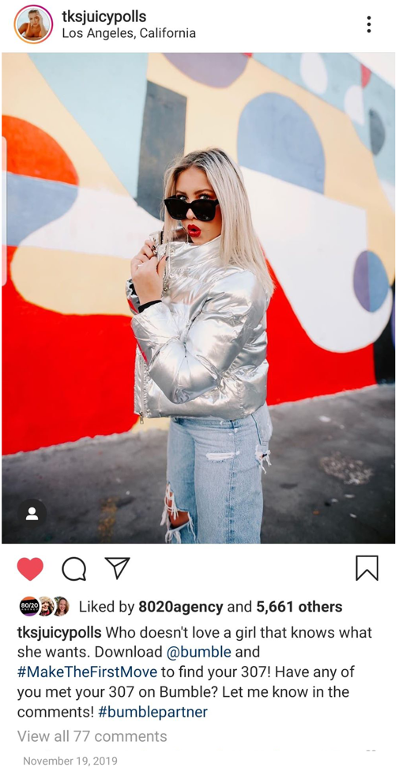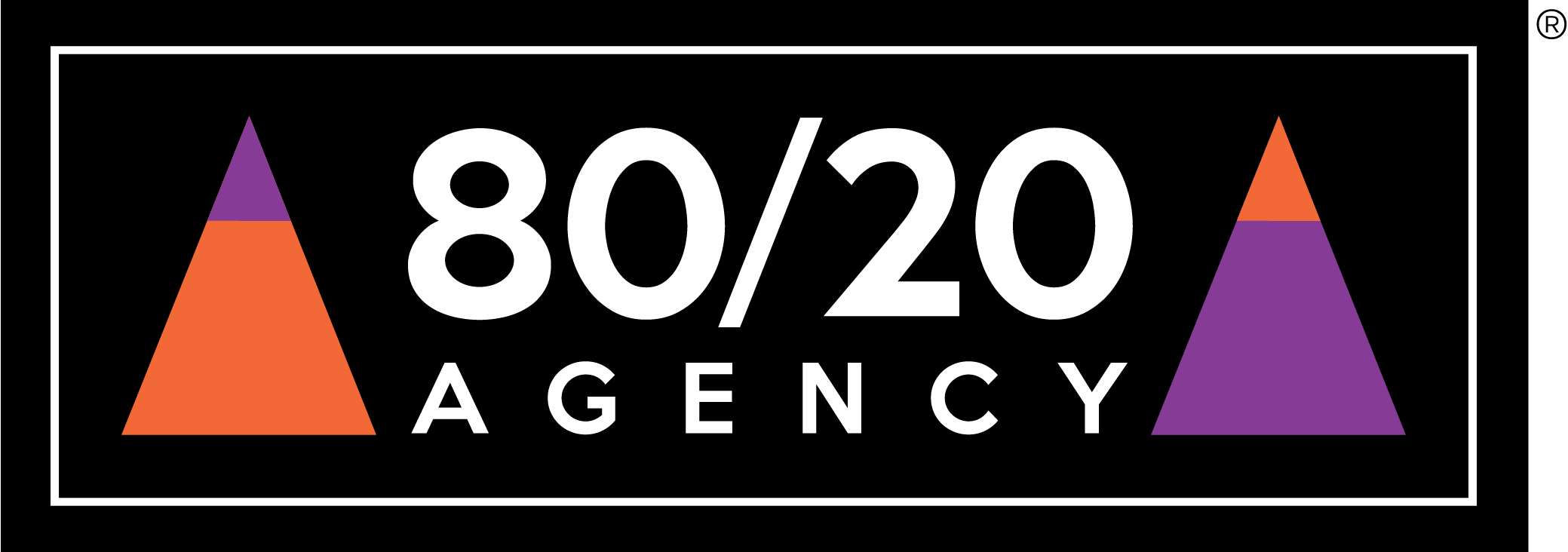As marketers, we are constantly searching for the next advertising goldmine.
Capitalizing on growing trends is key to building your business’s brand, and one of note is the rise of Social Media Influencers, or internet celebrities.
Increasingly, marketers are shifting media dollars to influencers to create more engaging brand content – 70% of teenagers trust influencers over traditional ads, which explains why Business Insider reported that businesses are planning to spend over $2.4 billion on Instagram influencer marketing in 2020.
Your business needs to invest before the market is oversaturated.
Our mission at 80/20 Agency is to arm you with the latest trends in digital marketing, so here are the latest facts and figures about Influencer Marketing.
WHO ARE INFLUENCERS?
In the last 10 years, social media’s role in everyday life has skyrocketed. The number of social media accounts worldwide has risen 700%—from 1 billion to 8.2 billion—and people on average spend more than 2 hours a day on social media. Everything from how we date to how we engage politically is funneled through social media platforms like Facebook, Instagram, and Twitter, and experts agree that this trend will only go up.
Not only do these platforms have high consumer traffic, but also their users are also actively engaged with the content: they comment on their friends’ posts, share content they enjoy, and follow and interact with celebrities. Social media has become a medium through which they live their lives.
Enter Social Media Influencers.
While it’s difficult to define who an influencer is, generally, they are people who cultivate a loyal following and develop a brand through consistent social media content creation. Whether it be entertainment, makeup, fashion, or whatever else they choose to specialize in, they become an authority in their niche and attract interested users.
As their base grows, they become celebrities and turn this ‘influence’ into paid opportunities like product lines, TV deals, and sometimes, turning your dog into an influencer with 500,000 followers.

They can do this because their followers are not simply people into fashion or makeup: they are fans, engaged in the content—and the very lives—of the creators, and they are willing to pay products the influencer endorses.
But how do influencers turn passive users into active fans? According to Taylor King (@tksjuicypolls), one of 80/20’s clients and an influencer in Los Angeles with 50,000 followers, the key is being authentic and reciprocal.
“People are so invested,” said King. “The question as an influencer is ‘What’s going to make followers stay?’ Feeling noticed. You have to be their fan too and respond to people who comment and message.”
“Integrity of your brand is the most important thing. I’d rather have 10 loyal followers than 10 million who don’t care.”
Huda Kattan is a good example of this. She started forming a fan base 10 years ago through her makeup blogging, YouTube tutorials, and eventually, her own brand promotion. Fast forward to 2020, and she has her own makeup line and a net worth of over $600 million.
By capitalizing on her influence and turning it into money, Kattan transformed her content into a business.
WHO FOLLOWS INFLUENCERS?
The demographics of influencers vary with the type of content and platform, but the major trait is that they are Millennials and Gen Z-ers.
When you think about it, this isn’t very surprising. Millennials and Gen Z-ers use social media at much higher rates than older generations, and they use it as a hub for news, communication with friends, and most relevant to influencers, entertainment.
Additionally, for many influencers, their demographic skews female because of their content (for example, makeup and fashion, two primary influencer niches, appeal mostly to female followers). However, this is not to say that there isn’t cross-gender appeal.
What is most significant about these followers is that they’re engaged with the influencer’s content. Remember, people follow because they are fans of the influencer. The influencer’s blend of authenticity and authority is significant in a time when consumers are distrustful of traditional marketing for being “fake.”
Their resulting impact is massive — 61% of users interact with an influencer at least once a day, and a recent poll suggested that 31% of children now want to be a Social Media Influencer.
Couple these factors together and you end up with engagement rates that are significantly higher than traditional advertisers. Below are some statistics gathered from Phlanx.com comparing influencers’ statistics on Instagram with traditional brands.

HOW DO INFLUENCERS ADVERTISE?
Generally, a company will find an influencer whose audience aligns with the demographics and psychographics they want to reach, give them a product to advertise, and let them work their magic. Influencers are content creators—advertisers know this and allow them to integrate a product into their brand organically.
Here is an advertisement Taylor King did recently for Bumble.

Despite this being a paid advertisement, it looks identical to her regular content. Taylor makes it feel like she is simply talking to her friends about a product she enjoys. This combination of engaged fans and the casual nature of the ad leads to sales.
WHY DOES THIS WORK?
There are a number of reasons influencer advertising is effective.
Consistently, studies show that peer suggestions are the most effective form of advertising. When your friend who plays video games tells you a new game is amazing, you are more likely to trust them.
Because of the peer-to-peer relationship between influencers and their followers, these ads operate in a similar way—49% of consumers depend on influencer recommendations, and a survey by Dana Rebecca Designs showed that 72% of respondents made a beauty-related purchase after seeing a post on social media.
Plus, because the ads seem more organic, it’s more likely to stick in the follower’s head. Advertisers have a history of subliminally promoting products, doing everything from secret messages in advertisements to product placement in movies, and all these tactics have a significant impact on consumer decisions.
Most importantly, influencers make quality ads. They are professional content curators – making something inorganic feel organic is much of their job, and they understand how to communicate effectively with their followers.
The result for businesses? A huge Return on Investment (ROI). The average business makes $5.20 for every $1 spent on influencer marketing without designing a single ad, and according to research by Mediakix, most businesses see no financial downside to investing in influencers.
WHERE IS THIS TRENDING LONG-TERM?
Because of the relationship between social media, the average consumer, and businesses, the role of Influencers is only going to grow.
Because of the relationship between social media, the average consumer, and businesses, the role of influencers is only going to grow.
Every year, social media becomes a bigger player in the global network. Social media is used for everything from connecting with voters to organizing protests, and newer platforms like TikTok have seen their number of subscribers explode. As users continue to flock to these forms of communication, the reach and impact of influencer marketing will continue to climb.
Additionally, the generation of ‘internet savvy’ consumers is going to become the largest consumer force in the economy. Already, Millennials and Gen Z-ers combined have more buying power than any other generation, and a whopping 94% of them prefer online shopping.
This is why businesses are investing more and more money into influencer marketing—in 2018, 17% of companies spent over half their marketing budget on influencers, and almost two-thirds of businesses increased their influencer marketing budget in 2019.
This trend shows no signs of slowing down: By 2022, Mediakix estimates that businesses will spend a whopping $15 billion on influencer marketing.
HOW SHOULD YOU GET STARTED?
First, compile a list of influencers you’re interested in contacting. Browse Instagram for popular accounts, search online for influencers in a niche you want to target, and utilize influencer databases such as Social Bakers.
After finding an influencer, look at their profile. See what other sponsored content they’ve made. Note what brands have paid for posts, how the advertisements look, and how it was received by their audience. Each influencer is different, and you will like some more than others.
Consider audience size and demographics while doing this. Avoid focusing solely on follower count; small-time influencers have higher engagement rates and may be more relevant for your business.
Once you have some influencers selected, contact them. Most influencers will include their email or website in their social media profile, and depending on their number of followers, you may be able to reach them simply by messaging them within the app.
When you reach out, be quick and to the point. Tell them why you want to partner with them and what you like about their feed, describe your product, and ask if interested in a partnership. Include a link to your website or social media account to show that you’re a credible business with a quality product.
Alternatively, consider contacting influencer agencies like Viral Nation, whose business centers around connecting influencers with advertisers. Explain what your business is interested in and let the agents find an appropriate client.
Through all of this, consider your budget: top-end influencer like Kylie Jenner can charge as much as $100,000 per post, while micro influencers like Taylor King might agree to a few hundred dollars or a free product sample.
Influencers are a business, and they will each have their own way of negotiating, creating ads, and pricing their work. Figure out an arrangement that works for both you and the influencer, and let them work their creative magic.
SUMMARY: WHAT DOES THIS MEAN FOR YOUR BUSINESS?
As long as social media continues to play a role in the global economy, social media influencers will be able to develop selling power and create opportunities for your business.
This is the perfect time to “buy low” on influencer marketing and capitalizing on a rising trend.
Remember: if you don’t act on this, your competitor will.
Modernize your marketing plan by partnering with Social Media Influencers.


Recent Comments